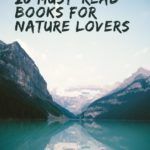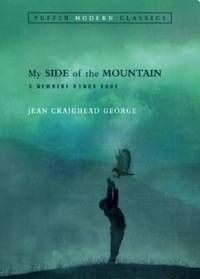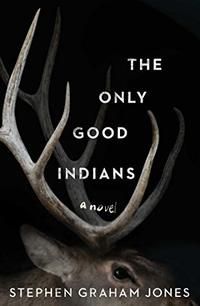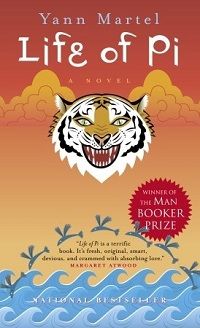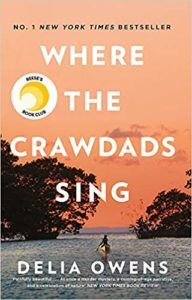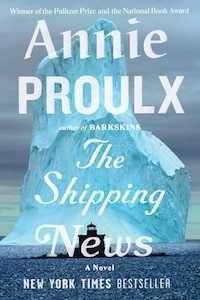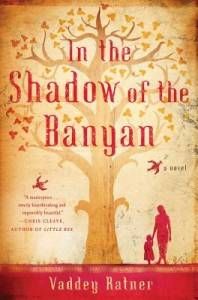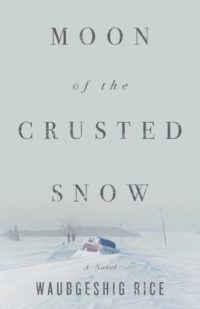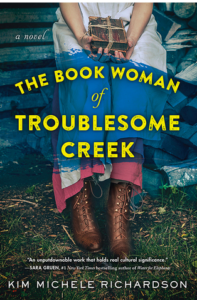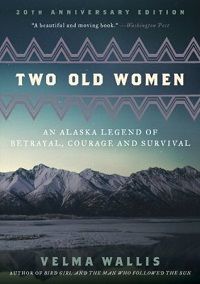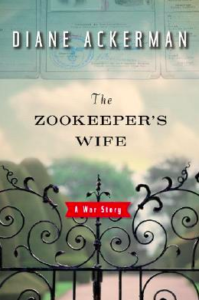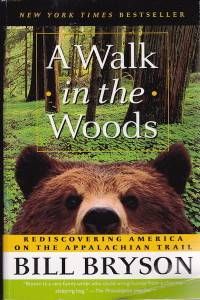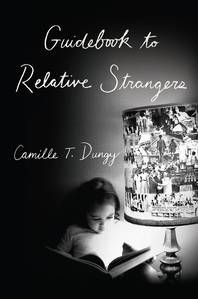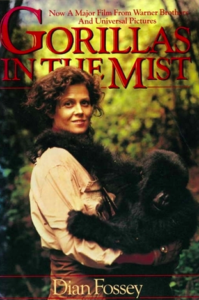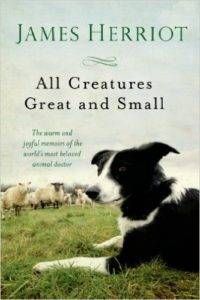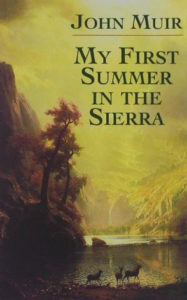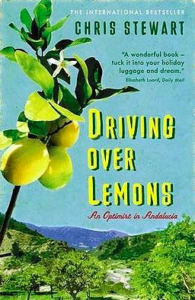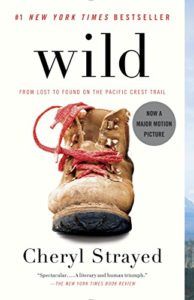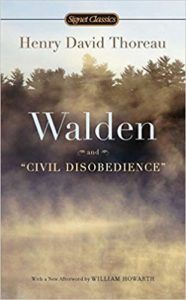Fiction Books for Nature Lovers
My Side of the Mountain by Jean Craighead George
Nearly 30 years before Gary Paulson graced the world with Hatchet, Jean Craighead George penned the ultimate runaway fantasy for children everywhere. Young Sam Gribley escapes to the Catskills in upstate New York. He learns to support himself along with his animal friends, a falcon and a weasel. Though written for young readers, you don’t have to be a child to admire Sam’s grit and ingenuity. George’s unique and deep appreciation of animals is deeply evident in this book.
The Only Good Indians by Stephen Graham Jones
Nearly ten years after a seemingly innocuous elk hunt, four friends find themselves on the wrong end of pursuit. Trapped between the mythology of the past and the need for survival in the present, the men must do whatever it takes as they struggle for their lives. Set in the overwhelming space of the northern great plains, this highly anticipated horror novel is for lovers of gritty western novels like The Revenant.
Life of Pi by Yann Martel
A boy. A tiger. A rowboat. The open ocean. In this surreal journey, a young man named Pi battles for survival on the Pacific ocean. When the ocean liner he’s sailing on with his family sinks, he barely escapes with a tiger he names Richard Parker. Despite the desperation of their situation, Martel weaves a magical tale. Pi witnesses firsthand the wondrous variety of the ocean. Overcoming biological barriers, Pi and Richard Parker reach transcendent understanding.
Where the Crawdads Sing by Delia Owens
Left to raise herself, Kya Clark carves out her own slice of heaven in the marshes of North Carolina. But when the “Marsh Girl” is accused of murder, she’s pulled from her beloved marsh and into the town that didn’t want her. A wildlife biologist, Owens’s great passion for the mechanisms of the world around us take center stage in this breathtaking novel. The wonder and brutality of the marsh draw the thin veil of society back to reveal the primitive instincts intrinsic to human behavior.
The Shipping News by Annie Proulx
After a devastating betrayal by the love of his life, “third-rate newspaperman” Quoyle moves his two young daughters to his ancestral homestead in Killick-Claw, Newfoundland. Rejected and ignored all his life, Quoyle finds surprising connections among the eccentric and insular locals. Shaped by the wind and the waves, ways and traditions are set firmly against the tempestuous coast. Proulx spins gripping a tale about discovering where you belong.
In the Shadow of the Banyan by Vaddey Ratner
From 1975–1979, Cambodia was under the thumb of the brutal Khmer Rouge. Told through the lens of a young girl named Raami, In the Shadow of the Banyan follows an aristocratic family put through horrible atrocities by the communist regime. As the trauma intensifies, Raami loses her voice, but finds a new sense of wonder for the beauty of the world around her. Ratner’s masterful descriptions of the landscape spin a tale of the necessity of beauty in survival.
Moon of the Crusted Snow by Waubgeshig Rice
Set in a collapsing Anishinaabe community, this novel explores the consequences when an entire community has cabin fever. As chaos threatens to overtake them, the people of the community turn back to ancestral cultural relationships with the land in order to restore their tenuous grasp on society. Contrasted with the open space of The Only Good Indians, Moon of the Crusted Snow explores how nature can drive us too close to each other.
The Book Woman of Troublesome Creek by Kim Michele Richardson
Western Kentucky’s most unique phenomena collide in this tough, resilient novel. Cussy Carter is blue. She’s fought her way through a community suspicious of her to become a pack horse librarian: a person who delivers books, magazines, and newspapers to rural patrons. Richardson explores racial tensions, the struggle to survive, and the powerful reprieve of education in the thick, remote Appalachian wilderness.
Two Old Women by Velma Wallis
Superstition and reality intertwine in this powerful story of survival. During a time of extreme scarcity, two old women are abandoned by their tribe. In the harsh Alaska winter, they come together and find ingenuity they didn’t know they had. In stark detail, Wallis lays out the great paradox of nature. Their greatest foe, the unforgiving landscape, must be their savior.
Nonfiction Books for Nature Lovers
The Zookeeper’s Wife by Diane Ackerman
In 1939, the Warsaw Zoo was caught in the intersection between eugenics and wildlife biology. During the German occupation in World War II, sycophantic officers circled the zoo, which housed some of the great living treasures of Western Europe. Exploiting the Nazi obsession with science and power, the zookeeper, Jan and Antonia Zabinski risked their lives aiding the Polish resistance. Part history, part naturalism, this meticulously researched book will show you a new side of Warsaw.
Born Free by Joy Adamson
How thick is the line between civilization and nature? This is the classic question in Adamson’s account of her relationship with a lioness cub. The book was turned into an Oscar-winning movie in 1960, but it’s more than worth it to read Adamson’s story in her own words. The questions posed in this book continue to plague society as we struggle to respect the boundaries of the other inhabitants of the earth.
A Walk in the Woods by Bill Bryson
Along the dense, rolling Appalachian Trail, Bill Bryson struck out in pursuit of adventure. He lays exceptional historical and ecological groundwork. Yet somehow, Bryson somehow never makes one feel like the subject of a lecture. All of Bryson’s books read like slightly drunk stories from your favorite uncle, and this is no exception. Run-ins with locals—and bears—pepper this colorful and entertaining account of the pioneer’s first obstacle.
Guidebook to Relative Strangers by Camille T. Dugy
Crisscrossing the United States for work is one thing. Doing it as a Black woman is another. Doing it with an infant in tow is another level. From kooky urban jungles to remote hamlets, Dugy experienced it all. Her work is part travel diary, part maternal memoir, and part self-discovery. As a poet, Dugy’s writing skitters pleasingly across the page, shining daily scenes of motherhood and surroundings through an intersectional lens.
Gorillas in the Mist by Dian Fossey
Dian Fossey’s unwavering passion for animals, stalwart integrity, and brutal murder at the hands of poachers are the stuff of epic sagas. Her account of 13 years in mountain gorilla habitats brought these gentle, intelligent mammals to the forefront of international consciousness. Fossey’s work endures not only due to its influence on environmentalism, but because of the tender compassion Fossey shows for these strong, sensitive wonders of nature.
All Creatures Great and Small by James Herriot
Before cloning, gleaming surgical centers, and even penicillin, there were hardworking country veterinarians. James Herriot was one such vet. Now nearly 100 years since he began practicing in Yorkshire, this story endures as a timeless depiction of how survival depends directly on the health of our animals. Sanity, too. Charming and direct, once you’ve read All Creatures Great and Small, you’ll want to dive right in to all of Herriot’s writing.
True North by Gavin Francis
The past and the present slam together in this meticulous account of a Nordic pilgrimage. Working his way north from Great Britain to the Arctic Circle, Francis follows a trail of history and mythology through a very modern and real region. More than that, though, this book is an experiment in following a thread, in grabbing onto a thought with both hands and following it to an unspeakable adventure.
My First Summer in the Sierra by John Muir
In 1869, John Muir was a green shepherd in the foothills of the Sierra Nevada. A Scottish immigrant, Muir escaped a tyrannical indoor upbringing to explore the best the western U.S. could offer. Over 40 years later, Muir used his diaries from this period to write a seminal American naturalist work. Muir’s moving affection for the sweeping terrain positively bursts off the page. All of Muir’s writings are a primer in natural exuberance, but My First Summer in the Sierra is a true American love story.
Driving Over Lemons by Chris Stewart
What happens when you realize a pipe dream? Chris Stewart (of Genesis) moved his pregnant wife to a crumbling Andalusian farmhouse, only accessible by a footbridge that frequently washes away. That’s just the beginning. Plagued by idiosyncratic neighbors and mind-boggling architectural conundrums, Stewart nonetheless paints a portrait of a fertile, sultry place. As you read, you can smell the citrus in the air and taste the costa in your mouth. It’s almost enough to fantasize about your own crumbling farmhouse.
Wild by Cheryl Strayed
This is for everyone intimidated by hiking. Strayed’s divorce, brush with heroin, and mother’s sudden death lead to a quarter life crisis before such buzzwords existed. Gathering meager savings from her time as a waitress and selling most of her possessions, she endeavored to hike the Pacific Crest Trail by herself. Strayed superbly juxtaposes her cringeworthy blunders against the majesty of the high sierras. She is so utterly vulnerable and honest it feels like you’re talking to a close friend. It may not make you want to hike 2,000 miles by yourself, but it will encourage you to take the first step to get to the bottom of yourself.
Walden by Henry David Thoreau
“It is earth’s eye, looking into which, the beholder measures the depth of his own nature.” This is how Thoreau describes the center of his universe during his break from civilization: Walden Pond. Thoreau’s ruminations on the condition of modern society earned him a permanent place in the American literary canon. Truly, though, the most important thing about this book is the central location. A relatively ordinary pond in the forests of Massachusetts, looked at through considerate eyes, became a paragon of beauty and virtue. The great thesis of Walden is this: the antidote to any maladies of man and society, is slow time in a beautiful place.
